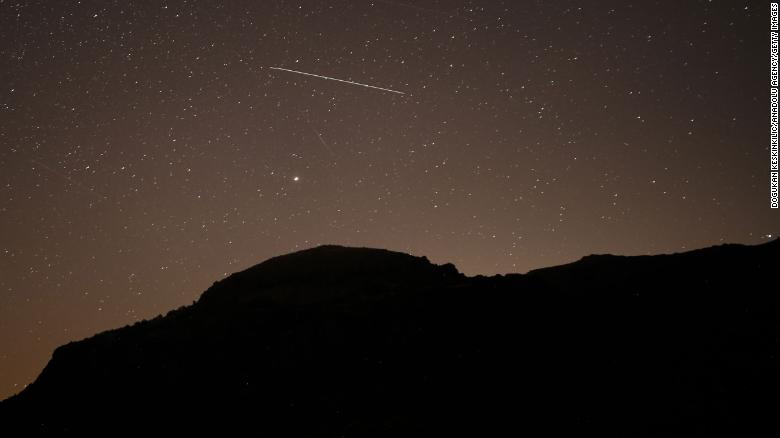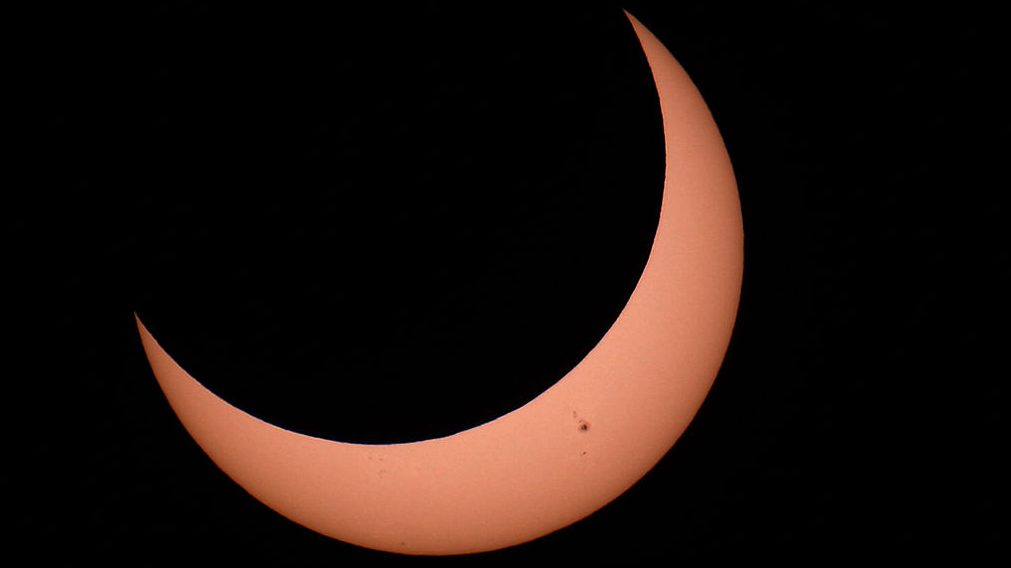(CNN) – Prepare your telescope, because on Wednesday morning meteors will illuminate the sky with their rapid light. LInfiltrate meteorites Leonids will peak in the early hours of November 17th.
The meteor shower is known to be a storm every 33 years, with NASA reporting that it last occurred in 2002.
According to NASA, its debris is derived from a small comet 55P / Tempel-Tuttle 3.6 km wide. The comet orbits at a speed of 71 kilometers per second.
Earthsky said viewers of the Leonid meteor shower would expect clear weather in parts of the United States with about 10 to 15 meteors per hour. According to NASA, a meteor storm contains significantly more stars than a meteor shower – at least 1,000 per hour.
How to watch the meteor shower
The moon is unfortunately in the gibbous phase of rising at peak night, i.e. most of the moon is visible. The bright light makes it difficult to see the meteor spreading in the sky.
For better vision conditions, go to a dark area where there is no light. According to Earthsky, the sky with the closed moon is the best. If the moon is known, wait until dawn to search for meteorites, because at that time the moon will set, Ertsky said.
If there is a large cloud layer, you will not see anything. “The cloud cover will spread across the Great Lakes and the Midwest and into the Central Plains overnight until Wednesday morning,” said CNN meteorologist Monica Garrett.
The sky in the south will be clear; West, west of rocky mountains; And northeast, along the coast, he added.
Do not worry if you miss the peak of the Leonid meteor shower. NASA says this will continue until November 30.
There is more Meteor showers According to the Earthsky 2021 Meteor Shower Guide, you can see throughout 2021:
December 13-14: Geminites
December 22: Urchidas
Solar and lunar eclipses
According to The Old Farmers Almanac, there will be one more solar eclipse and another lunar eclipse this year.
A Partial lunar eclipse It takes place on November 19, and observers in North America and Hawaii can see between 1 am ET and 7:06 am ET.
The last month of the year begins on December 4 with a total solar eclipse. It is not known in North America, but in the Falkland Islands, the southern tip of Africa, Antarctica and southeastern Australia.
Visible planets
According to the Farmers’ Almanac Planetary Guide, astronomers will have many opportunities to locate the planets in our sky for the remaining few mornings and nights of 2021.
With the exception of Neptune, most of these can be seen with the naked eye, but using a telescope or binoculars will provide a better view.
Wednesday night will shine in the night sky from November 29th to December 31st.
Venus, our closest neighbor in the solar system, will appear in the western sky at dusk until December 31st. It is the second brightest object in our sky after the moon.
From November 24 to December 31, Mars will appear red in the morning sky.
Jupiter, the largest planet in our solar system, is, when known, the third brightest object in our sky. Look for him in the evening until December 31st.
Saturn’s rings are visible only through telescopes, but the planet can be seen with the naked eye in the evenings from today until December 31.
The telescope or telescope will help detect the green glow of Uranus at night until December 31st.
And Neptune, our most distant neighbor in the Solar System, is visible through the telescope until the night of December 31st.




:quality(85)/cloudfront-us-east-1.images.arcpublishing.com/infobae/P3AVXSVDHJFBTIS4T24UMLKOXM.jpg)
-Rr1QlNNcgBY59pTh3nHEKBL-1200x840@diario_abc.jpg)